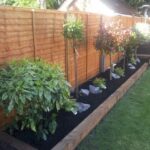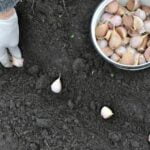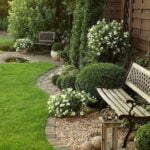Looking for creative and unique ideas for herb gardens design? Herb gardens are a wonderful addition to any home, providing fresh flavors and fragrances while also adding beauty to your outdoor space.
In this article, we will explore the different types of herb garden designs, from container gardens to raised beds and vertical gardens, as well as the essential herbs you should consider planting. We will also provide tips on choosing the right location, designing your layout, and maintaining a successful herb garden.
Herb gardens have been popular for centuries, offering a wide range of culinary and medicinal benefits. Whether you have limited space or plenty of room to spare, there are numerous ways to create a beautiful and functional herb garden that suits your needs. From adding greenery to small outdoor spaces with container gardens to maximizing vertical space with hanging or wall-mounted planters, the design possibilities are endless when it comes to herb gardens.
In addition to enhancing the flavor of your culinary creations, herb gardens can also attract beneficial insects and wildlife while providing natural remedies for common ailments. With so many benefits to growing herbs at home, it’s no wonder why many people are eager to start their very own herb garden. So let’s dive into some creative and unique ideas for designing an herb garden that will flourish in both form and function.
Benefits of Growing a Herb Garden
The benefits of growing a herb garden are numerous and can greatly enhance your overall well-being. Not only do herb gardens provide a convenient source of fresh, flavorful ingredients for cooking and medicinal purposes, but they also offer a variety of environmental and health benefits.
One of the primary advantages of having a herb garden is the easy access to fresh herbs that can elevate the taste of your culinary creations. Whether you enjoy cooking Italian cuisine with basil and oregano or adding a hint of freshness to your salads with mint and cilantro, having these herbs readily available can transform your dishes.
Additionally, growing your own herb garden allows you to have full control over the cultivation process, ensuring that no harmful pesticides or chemicals are used. This organic approach not only promotes better health for you and your family, but it also contributes to environmental conservation by reducing pollution from synthetic fertilizers and pesticides.
Furthermore, cultivating a herb garden can also be a therapeutic and stress-relieving activity that promotes mental well-being. Engaging in gardening activities has been proven to reduce stress levels and improve mood, making it an ideal hobby for promoting relaxation and mindfulness. The act of tending to plants and watching them flourish can bring about a sense of accomplishment and satisfaction.
| Benefits | Data |
|---|---|
| Easy access to fresh herbs | Elevates taste of culinary creations |
| Promotes organic approach | Reduces pollution from synthetic fertilizers |
| Promotes mental well-being | Reduces stress levels and improves mood |
Choosing the Right Location for Your Herb Garden
When it comes to choosing the right location for your herb garden, there are a few key factors to consider. First and foremost, you’ll want to think about sunlight. Most herbs thrive in full sun, so try to find a spot in your yard or on your patio that receives at least 6-8 hours of direct sunlight per day. If you’re limited on space, don’t worry – many herbs can also tolerate partial shade.
Next, consider accessibility. You’ll want to place your herb garden in a location that is easy to access and convenient to harvest from when you’re cooking or making teas. If you plan on using fresh herbs frequently, having them close to your kitchen door or outdoor cooking area will make things much easier for you.
Here are some ideas for herb gardens design locations:
- In a sunny corner of your backyard
- On a windowsill that gets plenty of sunlight
- As part of your existing vegetable garden
- Hanging vertically on a sunny wall
Finally, think about water and drainage. Herbs generally prefer well-draining soil, so be sure to choose a location where water won’t pool after heavy rain. Additionally, consider proximity to a water source for easy watering.
Now that you have some ideas for herb gardens design in mind, take some time to explore your options and find the perfect location for your herb garden. With the right amount of sunlight, accessibility, and proper drainage, you’ll be well on your way to growing a successful and thriving herb garden.
Types of Herb Garden Designs (Such as Container Gardens, Raised Beds, Vertical Gardens)
When it comes to designing your herb garden, there are several options to consider. Container gardens, raised beds, and vertical gardens are all popular choices for herb garden designs. Each type of design offers unique benefits and considerations for your herbs’ growth and maintenance.
Container gardens are an excellent choice for those with limited space or who want the flexibility to move their herbs around. Whether you choose traditional terra cotta pots, hanging baskets, or window boxes, container gardens allow you to customize the layout of your herbs and easily bring them indoors during inclement weather. They also provide good drainage, essential for the health of your herbs.
Raised beds are another popular option for herb garden design. They offer improved drainage and soil quality over traditional in-ground planting. Raised beds also make it easier to control weeds and pests while providing better accessibility for planting, watering, and harvesting your herbs. Additionally, they can be designed at a height that is comfortable for gardening without requiring bending or kneeling.
Vertical gardens are a creative way to maximize growing space in small areas. These designs utilize walls or structures to grow herbs upward instead of outward, making them ideal for balconies or small patios. Vertical gardens can add visual interest to your outdoor space while keeping your herbs easily accessible for harvesting. They also provide good air circulation which can help prevent disease and promote healthy growth for your herbs.
Ultimately, the best type of herb garden design will depend on your available space, gardening goals, and personal preferences. Evaluating each option’s benefits will help you determine which design is right for you as you bring your herb garden ideas to life.
| Type of Herb Garden Design | Benefits |
|---|---|
| Container Gardens | Flexibility in layout; easy mobility; good drainage |
| Raised Beds | Improved drainage; better soil quality; weed and pest control; accessibility |
| Vertical Gardens | Maximized growing space; visual interest; good air circulation |
Must-Have Herbs for Your Garden
When planning and designing your herb garden, one of the most important considerations is choosing which herbs to include. Whether you are a seasoned gardener or a beginner, there are certain must-have herbs that can add flavor and fragrance to your garden. Some of the most popular and versatile herbs for any garden include basil, mint, rosemary, thyme, parsley, and chives.
Basil is a staple herb in many kitchens and can be easily grown in containers or directly in the ground. Its aromatic leaves are essential for making pesto and adding flavor to various dishes. Mint is another must-have herb known for its refreshing scent and ability to thrive in both shaded and sunny areas. It is best contained within a pot due to its invasive nature.
Rosemary, with its woody stems and fragrant leaves, can add both flavor and architectural interest to your garden. Thyme is a low-maintenance herb that comes in different varieties and can be used fresh or dried in cooking. Parsley is a biennial herb that can be grown as an annual, offering versatility for culinary use. Chives are easy to grow and produce edible flowers that can enhance the aesthetics of your garden.
In addition to these must-have herbs, consider including other favorites such as cilantro, dill, sage, oregano, and lavender in your herb garden design. These herbs not only provide culinary benefits but also attract pollinators and emit delightful scents throughout your outdoor space. By incorporating a variety of must-have herbs into your garden design, you can create an attractive and functional space that caters to your culinary needs while adding visual appeal with vibrant colors and textures.
Designing and Planning Your Herb Garden Layout
Considering Space and Location
When it comes to designing and planning your herb garden layout, one of the first things to consider is the space and location. Whether you have a small balcony, a large backyard, or even just a kitchen counter, there are various options for creating a herb garden that suits your space. Container gardens are perfect for limited spaces, while raised beds work well for larger areas. Vertical gardens can also be a great space-saving option.
Creating Zones
To make the most of your herb garden, consider creating different zones based on the sun exposure and water needs of the herbs. Group herbs with similar requirements together to ensure they thrive in their environment. For example, place sun-loving herbs like basil and rosemary in a sunny spot, while placing shade-loving herbs such as cilantro and parsley in a shadier area.
Layout and Access
When planning your herb garden layout, think about accessibility. You’ll want to place frequently used herbs closer to your kitchen or outdoor cooking area for quick and easy access. Additionally, consider pathways that allow you to move around the garden easily for maintenance tasks such as watering, pruning, and harvesting.
By considering these key elements when designing your herb garden layout, you can create a functional and visually appealing space that suits both your needs and the needs of your herbs.keywords: ideas for herb gardens design.
Incorporating Functional and Aesthetic Elements Into Your Herb Garden Design
When designing an herb garden, it’s important to consider both the functional and aesthetic elements that will make your garden not only beautiful but also practical for growing herbs. Incorporating these elements into your design can result in a visually appealing and productive space that enhances your outdoor area. Here are some key considerations to keep in mind as you plan out your herb garden design.
Functional Elements
One of the essential functional elements to incorporate into your herb garden design is proper drainage. Herbs generally prefer well-draining soil, so be sure to choose containers or raised beds with drainage holes if you opt for these designs. Additionally, consider the sun exposure and wind patterns in your chosen location. Most herbs thrive in full sun, so aim to place your garden where it will receive at least 6-8 hours of sunlight each day.
Aesthetic Elements
In addition to functionality, aesthetic appeal is an important aspect of herb garden design. Consider adding visual interest with different heights and textures by mixing tall, bushy herbs with trailing varieties. You can also create visual impact by incorporating decorative elements such as colorful pots or planters, trellises for climbing herbs, and pathways or stepping stones to provide easy access while adding charm to the overall look of the garden.
Harmonizing Functionality and Aesthetics
To bring together both functional and aesthetic elements in your herb garden design, think about how you can marry form and function. For example, you could use attractive yet practical containers for planting herbs or intersperse edible flowers among your herbal plants for both visual appeal and culinary use. By strategically incorporating both aspects into your design, you can create a harmonious and enchanting herb garden that is as useful as it is beautiful.
Incorporating functional and aesthetic elements into your herb garden design takes careful planning and consideration, but the end result will be a delightful space that not only delights the senses but also provides an abundance of fresh herbs for culinary use. Keep these ideas in mind as you bring your herb garden design to life.
Maintenance Tips for a Successful Herb Garden
When it comes to maintaining a successful herb garden, there are several key tips to keep in mind. Proper maintenance is crucial for the health and longevity of your herbs, ensuring that they continue to thrive and provide you with a bountiful harvest. From regular watering to proper pruning, here are some essential maintenance tips for your herb garden:
1. Watering: Proper watering is essential for the health of your herb garden. Most herbs prefer well-drained soil, so be sure not to overwater them. Depending on the climate and weather conditions in your area, you may need to water your herbs every 2-3 days or even just once a week. Be sure to monitor the soil moisture levels and adjust your watering schedule accordingly.
2. Pruning and Harvesting: Regular pruning and harvesting are necessary for promoting healthy growth in your herb garden. By trimming back overgrown branches and regularly harvesting mature leaves, you can encourage new growth and prevent your herbs from becoming too leggy or overcrowded.
3. Fertilizing: While many herbs don’t require much fertilization, adding some organic fertilizer or compost to the soil can help boost growth and flavor. Consider using a slow-release fertilizer or incorporating compost into the soil at the beginning of each growing season.
In addition to these maintenance tips, it’s also important to consider creative and unique ideas for herb garden design that can enhance both the functionality and aesthetic appeal of your garden space.
– Incorporate various containers: Utilize different types of containers such as terracotta pots, wooden crates, or hanging baskets to add visual interest to your herb garden while also maximizing limited space.
– Create themed sections: Arrange your herbs based on their culinary uses (e.g. Italian herbs, Mexican herbs) or by color to create visually appealing sections within your garden.
– Integrate companion planting: Plant beneficial companion flowers or vegetables around your herbs to attract pollinators, repel pests, and create an overall harmonious garden ecosystem.
By implementing these creative design ideas along with proper maintenance practices, you can transform your herb garden into a beautiful and functional oasis that provides you with an abundant supply of fresh herbs throughout the year.
Creative and Unique Ideas for Herb Garden Design
When it comes to designing an herb garden, there are countless creative and unique ideas to consider. One interesting idea for herb garden design is incorporating themed gardens. For example, a medicinal herb garden can feature herbs known for their healing properties, while a culinary herb garden can focus on herbs commonly used in cooking. This not only adds visual interest to the garden but also provides a practical and functional purpose.
Another unique idea for herb garden design is creating a sensory garden that engages all five senses. This can include aromatic herbs like lavender and mint for smell, textured plants like rosemary and thyme for touch, and visually appealing plants like purple basil and variegated sage for sight. Adding wind chimes or water features can also provide auditory stimulation, making the herb garden a truly immersive experience.
Additionally, vertical herb gardens are gaining popularity as a space-saving and visually striking option. Utilizing wall space or trellises to grow herbs vertically not only creates an eye-catching display but also makes harvesting easier. For those with limited outdoor space, vertical herb gardens offer a creative solution for cultivating fresh herbs at home.
These are just a few ideas for herb garden design that can inspire creativity and personal expression in cultivating an herb garden. Whether it’s through themed gardens, sensory experiences, or vertical displays, incorporating these unique elements will add depth and character to any herb garden design. By exploring these creative ideas, individuals can create a personalized and distinctive herb garden that reflects their own style and preferences.
Conclusion
In conclusion, designing your own herb garden can be a fun and rewarding experience. From the numerous benefits of growing your own herbs to the various types of herb garden designs, there are plenty of reasons to start planning and creating your very own herb garden. Choosing the right location for your garden and selecting the must-have herbs are crucial steps in getting started, but it doesn’t end there.
When it comes to bringing your herb garden design ideas to life, it’s important to consider both functionality and aesthetics. Incorporating functional elements such as proper spacing for growth and easy access for harvesting, as well as aesthetic elements like color schemes and decorative features, will help create a harmonious and visually appealing space.
Furthermore, don’t forget about maintenance. Keeping up with regular care and maintenance is essential for a successful herb garden. This includes tasks such as watering, fertilizing, pruning, and controlling pests.
By dedicating time to maintain your garden properly, you’ll ensure that your design ideas flourish into a thriving herb garden that you can enjoy for years to come. Whether you choose a container garden, raised beds, or vertical gardens design, implementing these creative and unique ideas will help bring your dream herb garden to life.
Frequently Asked Questions
What Is the Best Layout for an Herb Garden?
The best layout for an herb garden depends on the space available and personal preference. However, a common layout is to plant taller herbs in the center or back, with shorter ones in front for easy access.
What Herbs Grow Well Together Chart?
Herbs that grow well together include basil and tomatoes, rosemary and sage, and mint and cilantro. These combinations work because they have similar water and sunlight needs, as well as complementary flavors.
How Do You Make a Beautiful Herb Garden?
To make a beautiful herb garden, consider incorporating a variety of colors, textures, and heights of herbs. Use decorative containers or border plants to create visual interest. Also, consider adding pathways or seating areas to enhance the garden’s appeal.

Welcome to my gardening blog! I am passionate about plants and enjoy sharing my knowledge and experiences with others. In this blog, I will write about everything related to gardening, from tips on how to get started to updates on my own garden projects.





